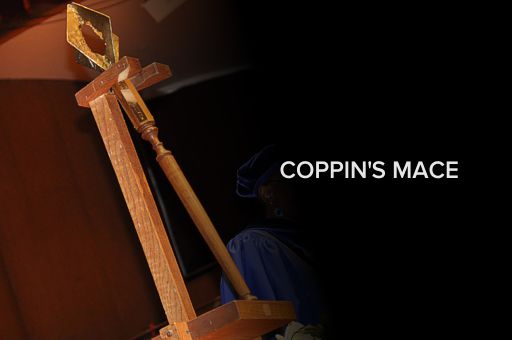Coppin Pride
Since our founding more than 100 years ago, Coppin State University is still going strong. Our history is full of legacy, academic excellence, colorful traditions, and deep community roots. It’s clear—we’re still thriving after all these years for a reason.
Our symbols of pride
At Coppin, we move with purpose. We are always seeking ways for our Coppin community to soar higher. That’s part of the meaning behind choosing an eagle to be our school mascot. Documented across cultures and throughout history, the eagle represents all that is courageous, noble, and strong.
Just like an eagle soars to heights above the clouds, Coppin provides the space for our students to soar to heights higher than they can even imagine. With a Coppin education, there’s no limit to how high you can fly.
As Eagles, we love to show our pride through our official University colors, blue and gold. Blue represents our responsibility to our students and community. It also represents the loyalty that keeps our faculty and staff in long serving roles, and our alumni that stay committed to nurture the generations behind them.
Our gold is meant to draw attention. It speaks to the success of our legacy, as well as the achievements of students, alumni, faculty, and staff across our Coppin family. Optimistic and positive, our gold tells the world not only what’s important to us, but also the higher ideals, wisdom, and understanding we constantly push our Eagles to pursue.
Alma Mater
We raise our song to thee with hearts anew;
Thy name has been our pride,
Thy light has been our guide,
Leading us ever on
Through all the years.
Hail to thee, Coppin, our alma mater true,
emblem of light and love, our gold and blue
Here at thy shrine we bow,
Gladly to make our vow
That we shall always stand
Loyal to thee.
The Talon Magazine
The CSU Mace

Coppin's mace is carried by the Grand Marshal during special academic ceremonies. In medieval times the mace was a heavy war club with a spiked or flanged metal head and was used to crush armor. When a high official was taking office or opening his court and needed a bodyguard, the mace, a formidable weapon, was held ready to protect the person of the dignitary. However, as early as the 13th century, the warlike image of the mace began to diminish, and the mace became a symbol of peaceful leadership; the spikes were replaced with jewels and precious metals. The academic mace has become the symbol of power of an academic institution to confer degrees.